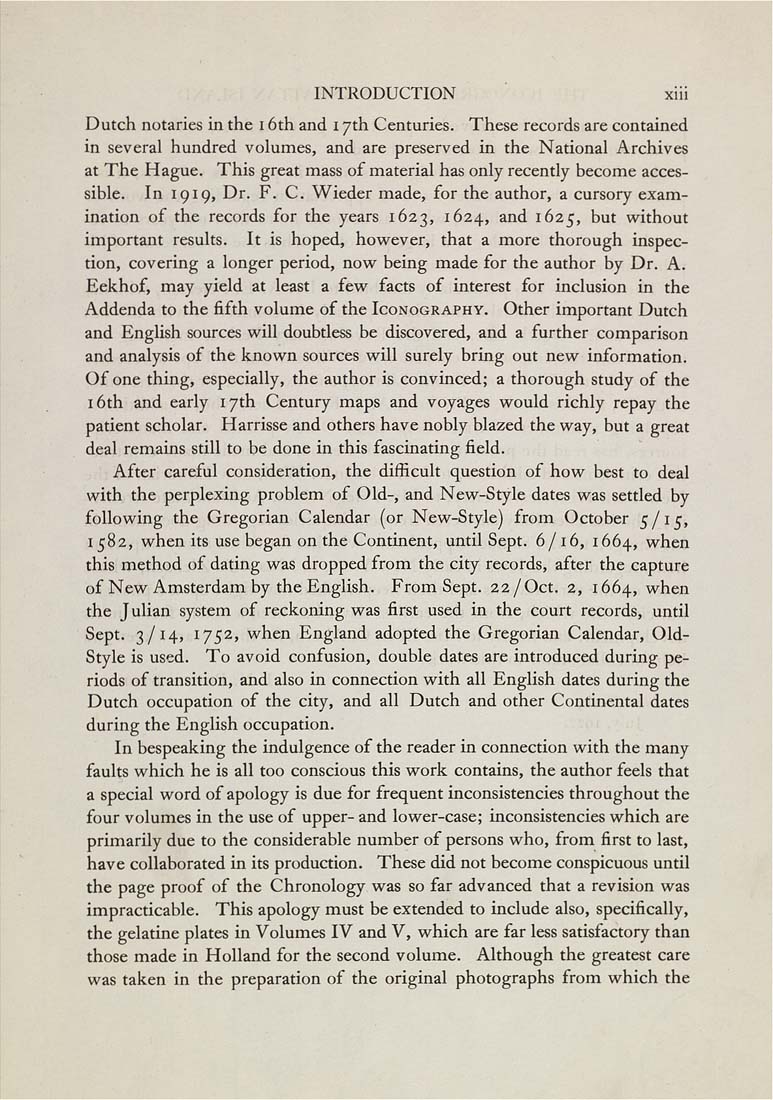INTRODUCTION xiii
Dutch notaries In the 16th and 17th Centuries. These records are contained
in several hundred volumes, and are preserved in the National Archives
at The Hague. This great mass of material has only recently become acces¬
sible. In 1919, Dr. F. C. Wieder made, for the author, a cursory exam¬
ination of the records for the years 1623, 1624, and 1625, but without
important results. It is hoped, however, that a more thorough inspec¬
tion, covering a longer period, now being made for the author by Dr. A.
Eekhof, may yield at least a few facts of interest for inclusion in the
Addenda to the fifth volume of the Iconography. Other important Dutch
and English sources will doubtless be discovered, and a further comparison
and analysis of the known sources will surely bring out new information.
Of one thing, especially, the author is convinced; a thorough study of the
16th and early 17th Century maps and voyages would richly repay the
patient scholar. Harrisse and others have nobly blazed the way, but a great
deal remains still to be done in this fascinating field.
After careful consideration, the difficult question of how best to deal
with the perplexing problem of Old-, and New-Style dates was settled by
following the Gregorian Calendar (or New-Style) from October 5/15,
1582, when its use began on the Continent, until Sept. 6/16, 1664, when
this method of dating was dropped from the city records, after the capture
of New Amsterdam by the English. From Sept. 22/Oct. 2, 1664, when
the Julian system of reckoning was first used in the court records, until
Sept. 3/14, ^yS'^y when England adopted the Gregorian Calendar, Old-
Style is used. To avoid confusion, double dates are introduced during pe¬
riods of transition, and also in connection with all English dates during the
Dutch occupation of the city, and all Dutch and other Continental dates
during the English occupation.
In bespeaking the indulgence of the reader in connection with the many
faults which he is all too conscious this work contains, the author feels that
a special word of apology is due for frequent inconsistencies throughout the
four volumes in the use of upper- and lower-case; inconsistencies which are
primarily due to the considerable number of persons who, from first to last,
have collaborated in its production. These did not become conspicuous until
the page proof of the Chronology was so far advanced that a revision was
impracticable. This apology must be extended to include also, specifically,
the gelatine plates in Volumes IV and V, which are far less satisfactory than
those made in Holland for the second volume. Although the greatest care
was taken in the preparation of the original photographs from which the
|








